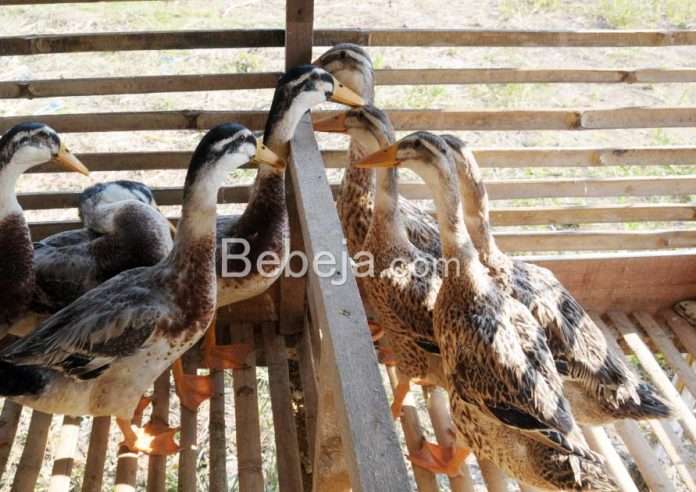Indonesia has several high productivity local duck breeds, which are frequently used as crossbreed parents to generate hybrid ducks with even greater egg productivity.
Egg productivity, which measures the number of eggs a duck produces within a defined time frame, is influenced by a range of factors, including genetics, nutrition, upkeep, health, and habitat. Multiple local duck breeds are capable of producing up to 150 eggs per duck annually. Egg productivity, which measures the number of eggs a duck produces within a defined time frame, is influenced by a range of factors, including genetics, nutrition, upkeep, health, and habitat.
- Mojosari ducks have a productivity rate of 200-260 eggs/head/year and start laying eggs at 25 weeks old.
- Tegal ducks have a productivity rate of 200-250 eggs/head/year and start laying eggs at 24 weeks old.
- Bali ducks have a productivity rate of 130-250 eggs/head/year and start laying eggs at 24 weeks old.
- Alabio ducks have a productivity rate of 230-275 eggs/head/year and begin laying eggs at 24 weeks old.
The term local duck refers to various types of ducks from Indonesia that are typically raised for their meat and eggs. Examples of local Indonesian ducks include:
A. Tegal duck: Originating from Central Java, has a slim, bottle-shaped body and an upright posture. The color of its coat varies from light brown, blackish brown, white, to greenish-black. These ducks are not suited for incubating eggs but instead are predominantly used for laying purposes.
B. Mojosari duck: Originating from Mojosari in East Java’s Mojokerto, this duck boasts a slightly plump physique, short neck, and sizable head. Their feathers are typically white or gray, and they are known for their impressive egg-laying abilities, producing around 200-250 eggs per year per duck.
C. Alabio duck: Hailing from South Kalimantan’s Alabio, this duck has a moderate body, long neck, and small head. The plumage of Alabio ducks is brown or black with white patches on their necks and wings. These ducks exhibit good hatchability, typically around 70-80%.
D. Magelang duck: Duck is a breed from Central Java, characterized by a round body shape, medium neck, and slightly larger head. The plumage is either white or brown. On average, Magelang ducks weigh approximately 1.5-2 kg per head.
Local ducks have proven beneficial for their ability to adapt, endurance, and access to feed, though they have limitations in terms of growth, body weight, and product consistency. As a result, various techniques such as selection, crossing, and mutation have been applied to enhance the breed.
One way to boost laying duck productivity is through intensive or semi intensive maintenance. Intensive maintenance involves breeding ducks and providing them with the proper nutrition. Semi intensive rearing involves capturing ducks during specific periods (starter phase and when ready to lay eggs) and then releasing them during another phase (grower phase).
Intensive maintenance results in a 55.6% increase in egg production, thus proving to be profitable. When laying ducks graze, their egg production ranges from 26.9% to 41.3%. It is important to balance intensive maintenance with necessary feeding to enhance the productivity of local laying ducks.
